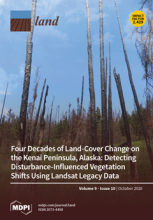Land Library
Welcome to the Land Portal Library. Explore our vast collection of open-access resources (over 74,000) including reports, journal articles, research papers, peer-reviewed publications, legal documents, videos and much more.
/ library resources
Showing items 10 through 18 of 89.Soundscape analyses and noise measurements should be a part of pre-design works involved in planning green areas in city centers.
Civic participation has an irreplaceable role in the land-use planning process because it contributes a practical perspective to expert knowledge.
Existing studies on blockchain within land administration have focused mainly on replacing or complementing the technology for land registration and titling.
Green infrastructure is a strategically planned network of natural and semi-natural areas, including green and blue spaces and other ecosystems, designed and managed to deliver a wide range of ecosystem services at various scales.
Most election pledges require a significant budget for their implementation.
Street trees, native plantings, bioswales, and other forms of green infrastructure alleviate urban air and water pollution, diminish flooding vulnerability, support pollinators, and provide other benefits critical to human well-being.
In West Africa, where the majority of the population relies on natural resources and rain-fed agriculture, regionally adapted agricultural land-use planning is increasingly important to cope with growing demand for land-use products and intensifying climate variability.
Remotely sensed land cover data can be a tremendous resource to land use decision makers, yet there is often a disconnect between the worlds of remote sensing and local government. The Connecticut’s Changing Landscape project is focused on bridging this gap.
Urban development is the result of the interaction between anthropogenic and environmental dimensions.




